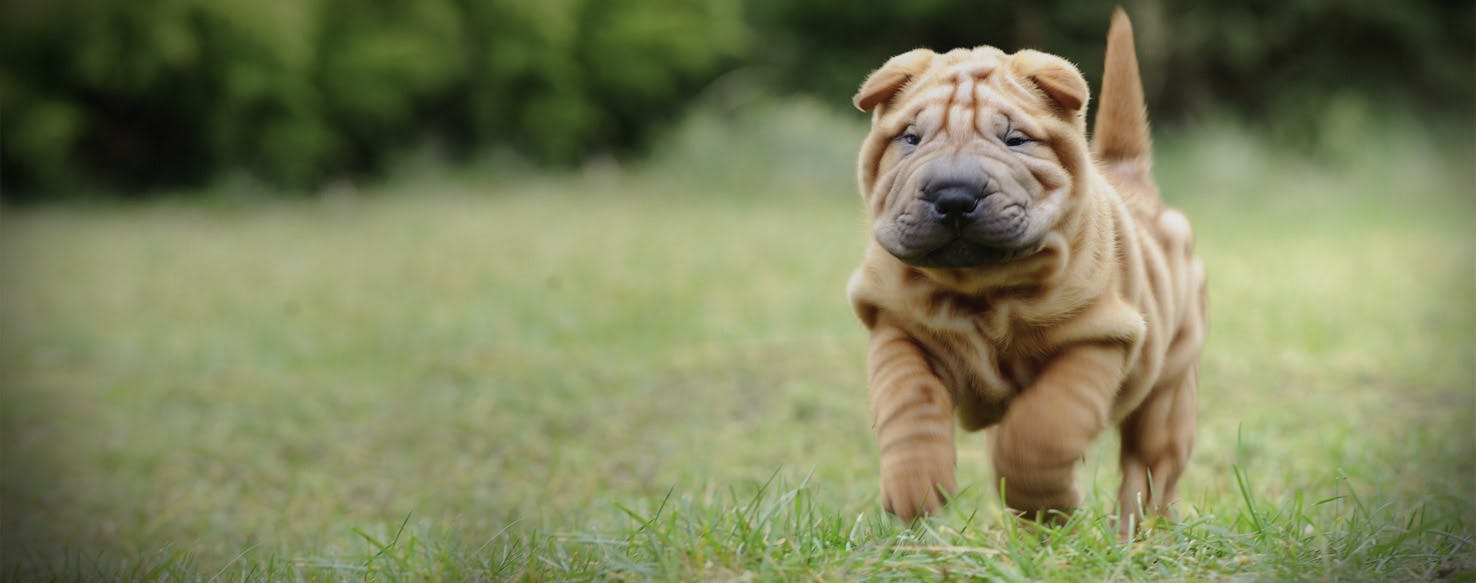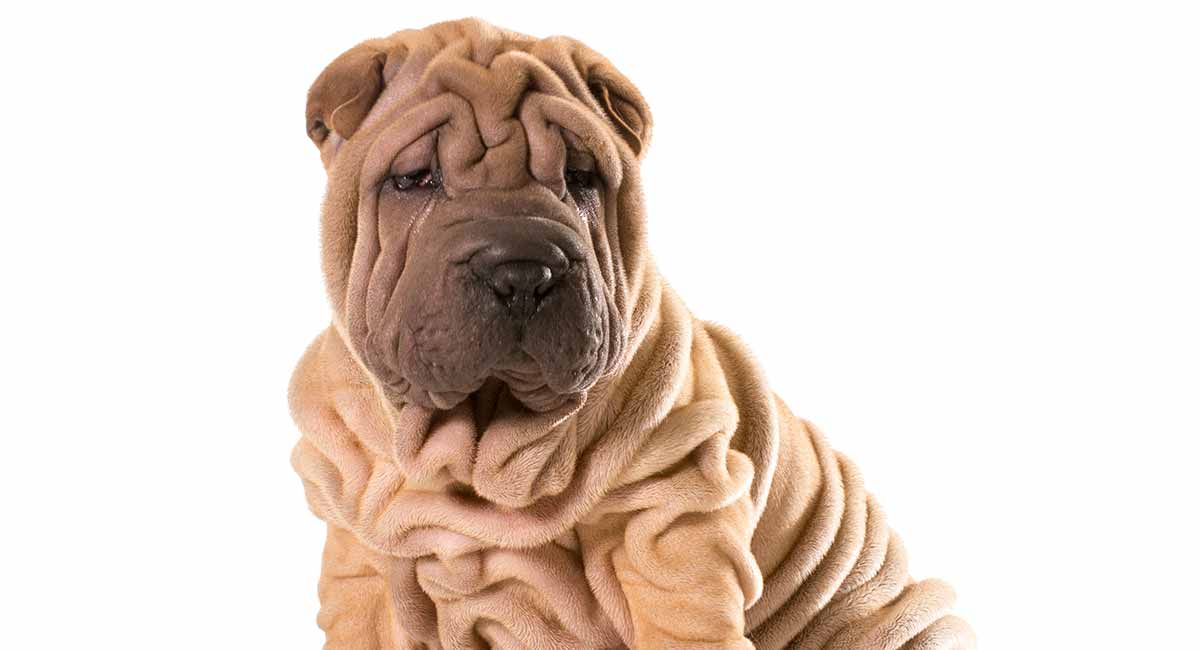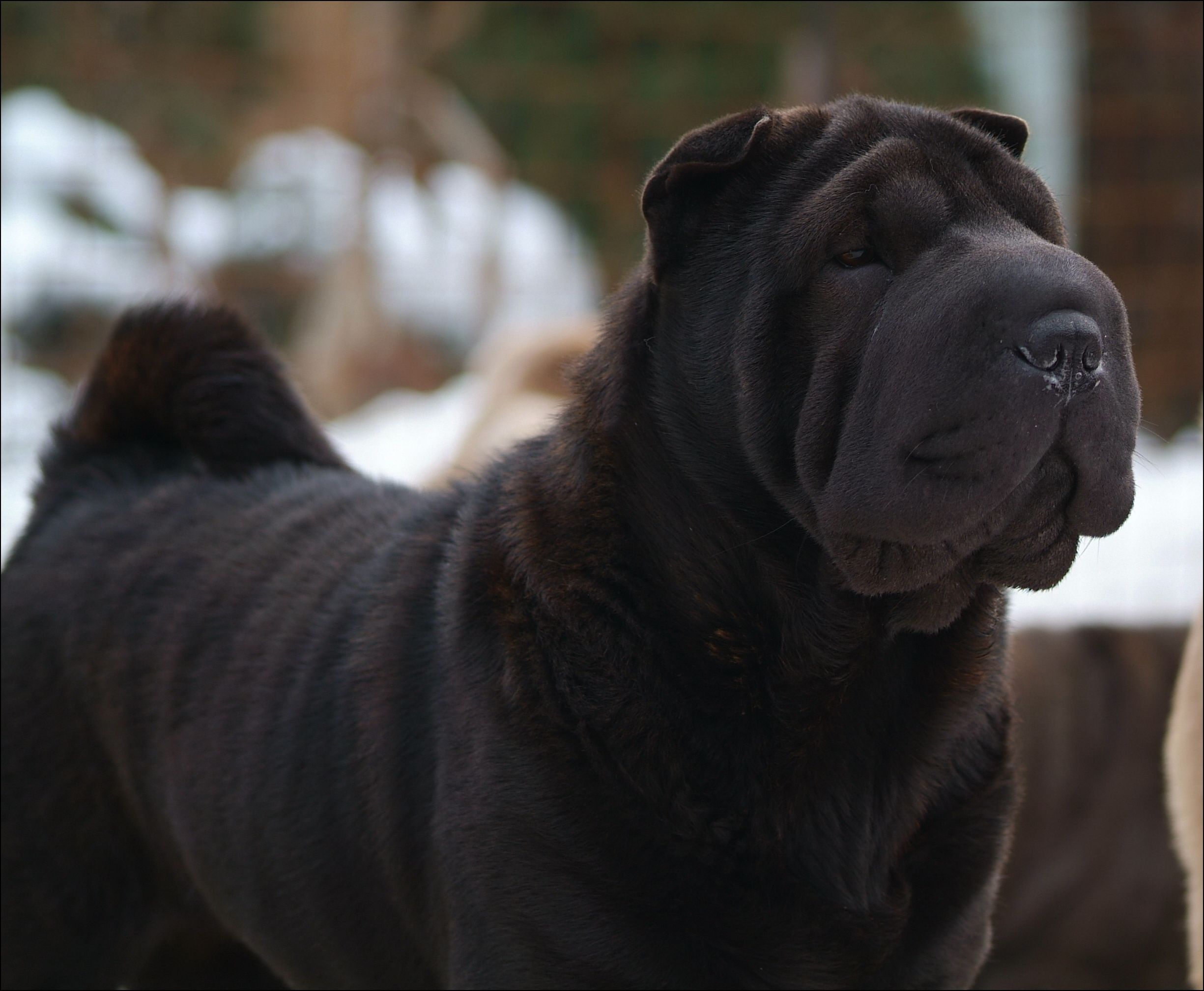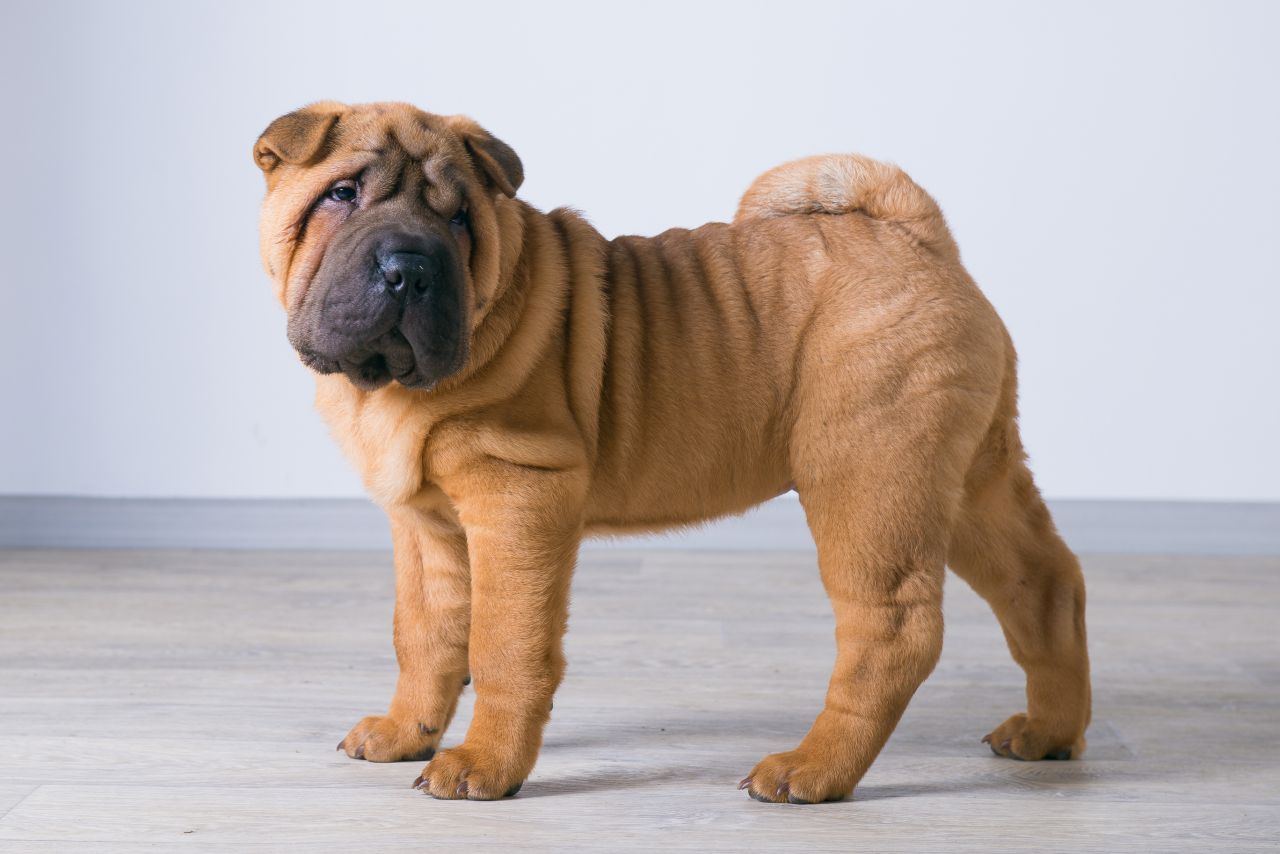Driven close to extinction as the Chinese government attempted to purge dogs during the chairmanship of Mao Tse-tung, the Chinese Shar-Pei was maintained in Hong Kong and Taiwan. Initially exported to the United States, the breed was a late arrival in western countries. For example, it only began to appear in the UK in the early 1980s. The Shar-Pei is still a relatively specialist breed and expensive to buy though it has grown in popularity.

ORIGINS
Shar-Pei dogs have origins that have to some extent had to be surmised as records suffered along with the popularity of the dog over time in China, both during and previous to the twentieth century. They have been bred and used for guarding, hunting, herding and fighting over the centuries.
How the Shar-Pei wrinkles have come about is also subject to speculation. Theories range from the dog having been overgrown to the idea that as a hunting and fighting dog the wrinkles made it difficult for any prey or competitor to inflict a serious bite or to hold the Shar-Pei down.

If so, this is quite a different approach to that applied to other dogs bred originally for similar purposes, such as, for example, the Staffordshire bull terrier. There are a great many similarities among many of these types of breeds, not least in temperament, where these breeds are naturally loyal and affectionate to their keepers but likely to be competitive and aggressive with other dogs. Their stocky build, stamina, and strength suggest that there are mastiffs or similar dogs somewhere in their ancestry. All these breeds benefit from a good deal of exercise in terms of brisk walks through in the Shar Pei’s case they can occasionally become overly-muscled which can increase risks to the dog’s health later in life.
 PERSONALITY AND CHARACTERISTICS
PERSONALITY AND CHARACTERISTICS
The Shar Pei’s distinctive look has made them fashionable at times and in many peoples’ opinions. The puppies are among the cutest of any dog breeds. However, being naturally strong in body and will, Shar Peis are independently minded and tenacious in their pursuit of an objective. They will take advantage of keepers that are weak with them or spoil them from an early age.

Shar Peis will try and dominate the relationship despite being very affectionate towards their keeper. Given these tendencies, they are not an ideal choice as someone’s first dog, and training has to be brought about at an early stage in order to manage their development and show that they are in fact great pets if cared for properly.
There are differences in Shar-Pei types. Aside from the meat-mouth, sometimes referred to as padded, and the bone-mouth type, there are variations in the type of coat and other parameters required for exhibition dogs, which over time have been defined and are occasionally modified by breed standards specified by the different Kennel Clubs.
An adult Shar-Pei stands around eighteen to twenty or so inches high, males being slightly larger than females. Solid colors with usually little evidence of any change in color tone except towards the Shar Pei’s back end and near the ears, are characteristics of a pedigree example of the breed.
 In general terms, the Shar-Pei has a blunt nose with a broad muzzle. Some wrinkling around the muzzle is normal, which may cause the snout to protrude above the Shar Pei’s nose in some types. Another characteristic of the Shar-Pei is its bluish tongue. The breed’s small ears are again thought to be rooted in the fighting origin of the breed, making them difficult to bite or hold.
In general terms, the Shar-Pei has a blunt nose with a broad muzzle. Some wrinkling around the muzzle is normal, which may cause the snout to protrude above the Shar Pei’s nose in some types. Another characteristic of the Shar-Pei is its bluish tongue. The breed’s small ears are again thought to be rooted in the fighting origin of the breed, making them difficult to bite or hold.

The base of its tail sits high on its body and curls tightly over the dog’s back. Shar Pei puppies appear almost to be “all wrinkles”, but smooth a little as the young Shar-Pei develops so that the wrinkles remain on the head, neck and front end of the adult dog. The short, strong and straight hair, makes the Shar-Pei coat feel almost prickly to the touch. Their lifespan is normally around twelve years.
HEALTH AND CARING
Prospective keepers of Shar Peis are well-advised to find a good breeding line, particularly regarding eye problems as these are often hereditary. Shar Peis can be prone to eye and skin related health issues. Their short coat makes them easy to groom in practice, whilst the deep skin between the wrinkles just needs to be inspected regularly.

Only a light occasional bath is required for most Shar Peis kept as pets. A light brushing is also appropriate, particularly before and after shedding their coat or after any vigorous outdoor exercise. This is the preferred routine which tends to keep the skin within the wrinkled areas clean. Occasional nail clipping is usually required. Cleaning the ears of the Shar-Pei is the most significant other areas in a healthy dog, requiring care and a gentle approach. As with ears of similar dogs, a good general rule is to avoid trying to clean any area inside the ear that cannot be seen, and if the dog shows persistent signs of trouble with its ears, a trip to the vets is required.
 SHAR PEI SKIN PROBLEMS
SHAR PEI SKIN PROBLEMS
The folds or wrinkles in the Shar Pei’s skin increase the risk of skin problems for this breed. Regular inspection and observation of any undue reaction by the Shar Pei are the first precautions. Minor instances of inflammation will usually heal themselves or can be treated fairly easily by keeping them clean, generally dry if not serious such as dermatitis or mange, and applying suitable creams regularly. Mites and fleas occur can in all dog breeds and often require veterinary care. In Shar Peis, some instances of skin problems can be more serious:

- Dermatitis or eczema are more likely to occur in the Shar-Pei than many other breeds. A Shar Pei aggravated by this is not an ideal situation. While fleas or allergies might be the cause and particularly as the early symptoms are similar to mange, a visit to the vet at an early stage is definitely advisable.
- Demodactic mange, sometimes termed red mange, is an issue that Shar Peis are susceptible to, and is often hereditary. It is caused by parasites and unlike sarcoptic mange, tends not to aggravate the Shar-Pei but fur falls out. Because a bacterial infection will occur quickly as the exposed skin starts to flake, early veterinary treatment is required.
- Shar Pei rash again causes hair loss which leads to inflamed skin. Early veterinary advice should be sought.
Whilst Shar Peis, like many other dog breeds, have some susceptibilities, many individual dogs that are trained and cared for properly will never be affected by these illnesses. As with most pet health, even when the symptoms do occur, through early intervention by experienced practitioners most issues can be cleared quickly and relatively inexpensively, whilst more serious ones can usually be overcome through the right treatment thanks to the research that has been done over many years. Pet illnesses happen and are not something that should deter prospective keepers. Being aware of potential symptoms and buying from reputable breeders are the most suitable precautions.

